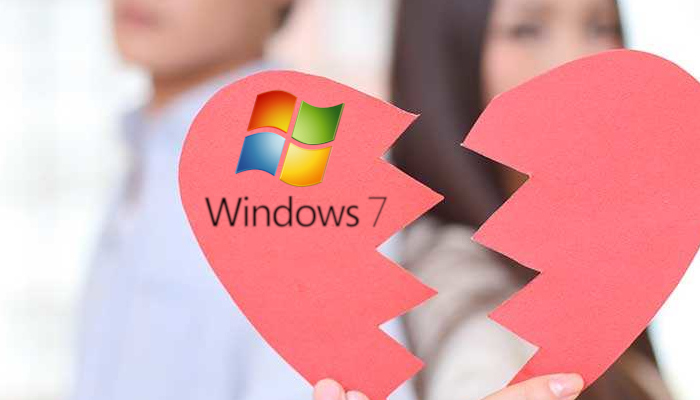Windows 7 says, “It’s not you, it’s me,” ahead of break-up

If you’re still using Windows 7 and loving it, you might not like hearing that the product is nearing the end of its life. Security updates will be cut off in just 5 months: January 2020. That will leave the product untended and vulnerable to new zero-day attacks that are discovered after the support period ends.
Well and truly old-aged for a piece of operating software that hit the market in 2009, Windows 7 once ran more than 63% of all Windows devices. Now the percentage is just 34% worldwide (source), but that user group consists of hardcore clients who have found everything they think they need in an operating system.
Unfortunately, the old grey mare, she ain’t what she used to be. Windows 10 is faster, more powerful, more secure and the dominant runner in the Windows stable. At 4 years old, it’s a reliable, proven performer (notwithstanding this hiccup) and Microsoft’s long-term goal is a continually updated monthly subscription to Windows that means we won’t see wholesale changes like this again. Windows 10 is the gateway to that future.
Since April, Microsoft has been delivering warnings about the impending termination of the extended support function in Windows 7. At this point there is just 5 months left to migrate.
It’s time to turn to your IT consulting company and arrange an upgrade. You may not need a hardware refresh as the minimum Windows 10 spec requires only 1 or 2GB of RAM and a 1 GHz processor to function – the same as Windows 7 – but you will need a plan. Because getting through this upgrade the right way will mean the traditional “lift-and-shift” migration style will become a thing of the past.
If you just can’t bear to let go, and your fleet runs on Windows 7 Professional or Enterprise editions, Microsoft will actually make another three years of security updates available to you, at a cost.
Still, we think it might be time to take a deep breath, blink away the tears, and move on.
At least you’ll always have your song.








